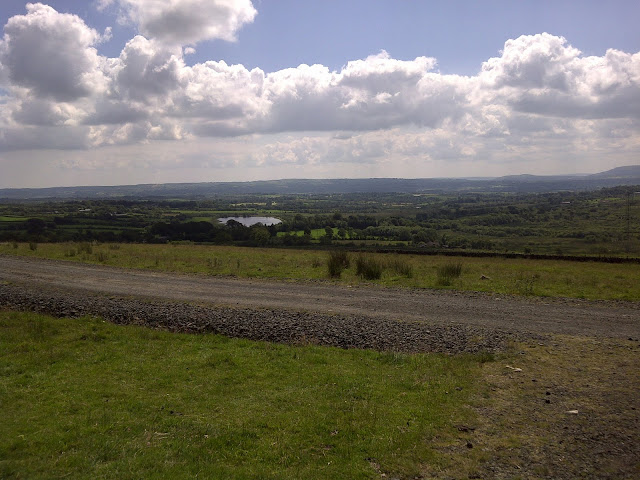A few frantic phone calls to the missus and work to make sure I wasn't needed for a few hours and I was ready to go. We thought we would give Dungiven a try and see how it goes. While on the way there it looked like there was no wind at all. Another CP student rang Bertie en route to say he was heading down as well.
 |
| Waiting for the wind at Dungiven |
Got to the site and there were other pilots about but no-one was flying due to lack of wind. Along with the usual horse play when there is no flying, a couple of pilots were gloating about being right out over the town earlier in the day
By the time I got set up, the other student had arrived and I had got my daily checks done the wind had picked up to just about soar-able levels almost directly onto the hill.
The other student went first and was bearly managing to soar and ended by just getting enough height for a slope landing.
The other student went first and was bearly managing to soar and ended by just getting enough height for a slope landing.
I went up next, and the wind picked up a little for me, I managed to soar for a while, then the instructor got on the radio and got me to fly out from the hill to perform an asymmetric collapse. This is where you reach up and grab a A line on one side and pull it until the canopy collapses (or tucks). This is a bit scary because the glider begins turning towards the collapsed side as well as banking. When I performed this maneuver I didn’t need to wait until my instructor told me to let go of the line, I had automatically let go. The glider almost immediately recovered by re-inflating the collapsed part of the wing, and I quite impressively remembered that I am to keep my “hands up” (i.e. do not pull on the controls) and let the glider settle before pointing the paraglider where I want to go next, which was back at the hill for more soaring fun.
A bit more soaring later and Bertie asked me back to the hill for my first slope landing. Wow I can run fast if I have to. A slope landing is across wind and because of this the ground speed is much faster, however, I managed to land and collapse the canopy in an acceptable manner. Yes!!!
So now I can soar, top land, slope land (well I did it once, no reason to think I can’t do it again) and not soil my underwear when the canopy tucks and recovers..... next stop may well be the site I now want to fly the most.....Magilligan, back to where this all started.
Unfortunately the weather forecast isn’t looking good for the coming week (what is left of Hurricane Katia is on it’s way to Ireland, Scotland and Northern England.
On the way home Bertie pointed out that I got a mention in Skywings magazine (the BHPA member's monthly magazine) which was his doing:
More First Flights. Ian Fraser (that is me that is) recently gained his EP qualification in record time (for Northern Ireland) with First Flight Paragliding. Thanks are due to some co-operative weather, and encouragement from Ian's wife, reported to have said she has never seen him so enthusiastic about anything.So you heard it here first folks, an Englishman breaking Northern Ireland records. I do suspect that if this is really a record it wont be long before it is broken.










